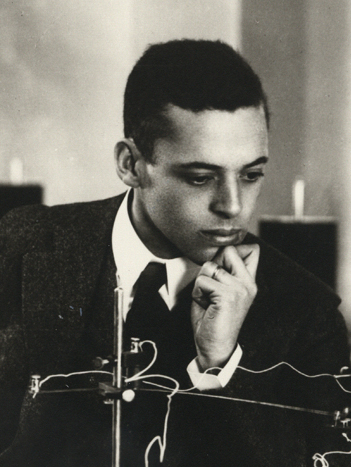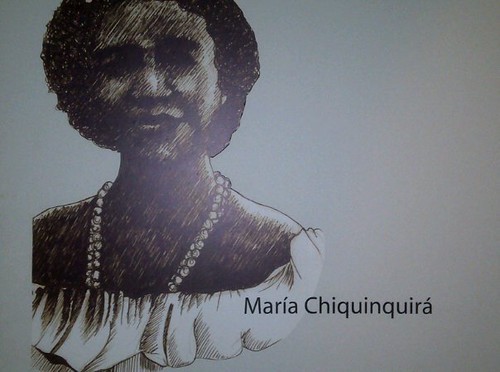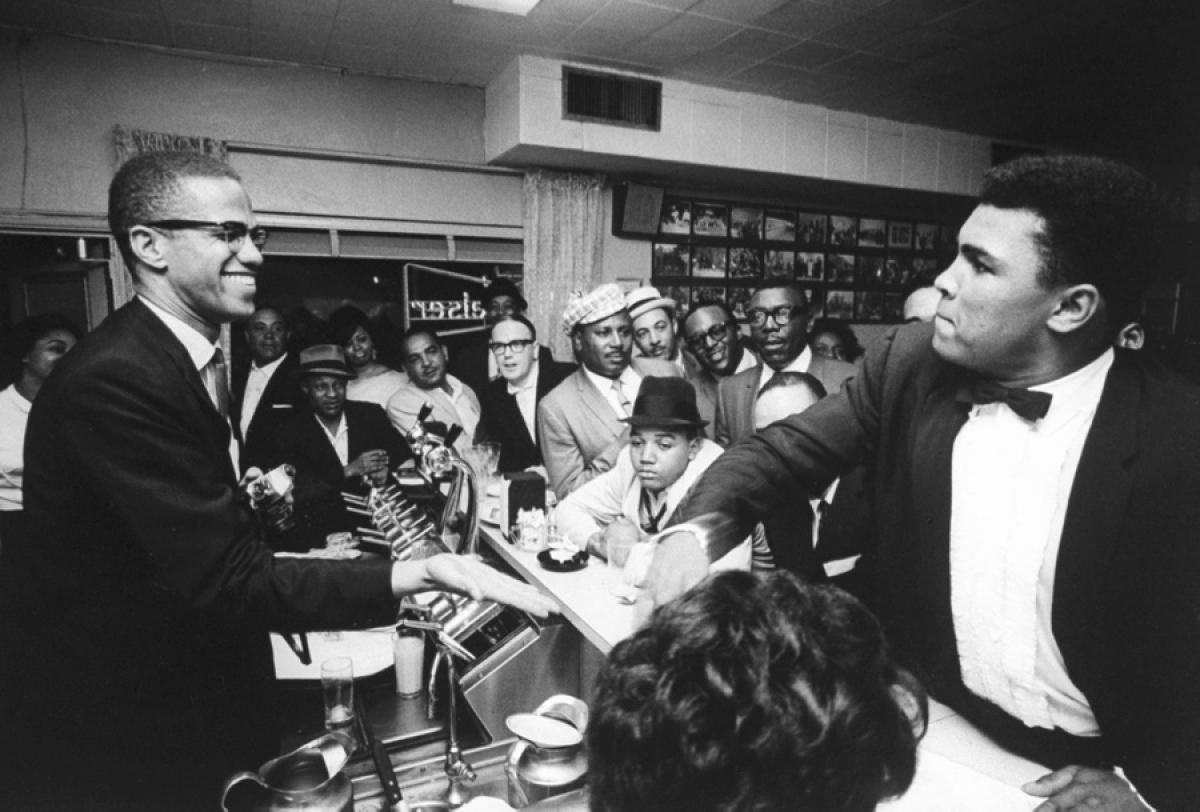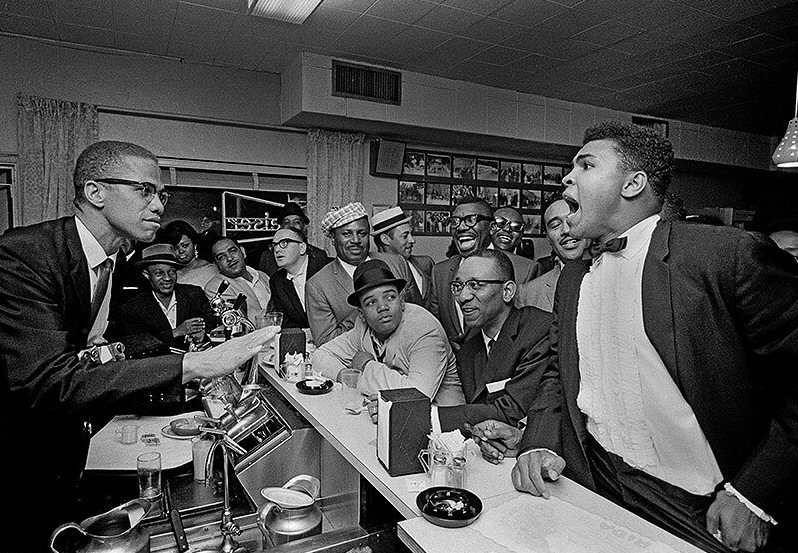You are using an out of date browser. It may not display this or other websites correctly.
You should upgrade or use an alternative browser.
You should upgrade or use an alternative browser.
✊ Black History Month ✊
- Thread starter OfTheCross
- Start date
More options
Who Replied?Paradise
Too tired to think of something witty to say...
Because I work in the science field I wanted to drop this little gem on you guys! Enjoy!
Ernest Everett Just was most famous for his works in Marine biology...

http://www.biography.com/people/ernest-everett-just-9359195
Ernest Everett Just was most famous for his works in Marine biology...

http://www.biography.com/people/ernest-everett-just-9359195
Last edited:
CapitalOne
Do You Believe...
cole phelps
Superstar


369th Infantry Regiment, formerly known as the 15th New York National Guard Regiment, was an infantry regiment of the United States Army National Guard that saw action in World War I and World War II. The Regiment consisted of African-Americans and African Puerto Ricans and was known for being the first African-American regiment to serve with the American Expeditionary Forces during World War I. Before the 15th New York National Guard Regiment was formed, any African American that wanted to fight in the war either had to enlist in the French or Canadian armies.[2] The regiment was nicknamed the Harlem Hellfighters, the Black Rattlers and the Men of Bronze, which was given to the regiment by the French.[3] The nickname "Hell Fighters" was given to them by the Germans due to their toughness and that they never lost a man through capture, lost a trench or a foot of ground to the enemy.[4] The "Harlem Hellfighters" were the first all black regiment that helped change the American public's opinion on African American soldiers and helped pave the way for future African American soldiers.
Notable soldiers
- Benjamin O. Davis Sr., Regimental Commander of the 369th Regiment (1938)and first African-American general (1941) in the US Armed Forces.
- James Reese Europe, an early ragtime and jazz bandleader and composer, who served as regimental bandmaster as part of the Harlem Hellfighters who led the first Americans into France, then into Germany after the Armistice. Also established the first African-American musicians union the Clef Club.[31]
- Hamilton Fish III, Company Commander in the 369th Regiment, New York Congressman, and Founder of the Order of Lafayette.
- Henry Johnson, recipient of the Croix de Guerre-posthumously awarded the DSC, Purple Heart and the Medal of Honor.
- Rafael Hernández Marín, considered to the greatest composer of Puerto Rican music.
- Myles A. Paige, the first African American to serve as a City Magistrate in New York City, appointed by Mayor Fiorello LaGuardia in 1936.[32]
- Spotswood Poles, referred to as "the black Ty Cobb" for his prowess in the professional Negro baseball leagues in the early 20th century.
- Needham Roberts, recipient of the Croix de Guerre and Purple Heart.
- George Seanor Robb, one of only 44 Americans to have been awarded the Congressional Medal of Honor for service during World War I.
- Bill "Bojangles" Robinson, tap dancer and actor
- Noble Sissle, American jazz composer, lyricist, bandleader, singer and playwright, who assisted James Reese Europe in forming the regimental band.
- Vertner Woodson Tandy, who was the first African-American to pass the military commissioning examination and was commissioned as a First Lieutenant in the 15th Infantry Regiment of the New York Guard. Tandy was also one of the founders, or "Seven Jewels," of Alpha Phi Alpha fraternity.
- Henry Charles Brennan Sr., Maj. (Ret.), the first African American to serve as Chief of Transportation for New York City's Department of Hospitals.
cole phelps
Superstar

Zumbi monument in Pelhourinho Square, Brazil:
A Quilombo was a free settlement of escaped slaves, and it sustained itself by sabotaging plantations or capturing slaves to force them to join. Quilombo Dos Palmares was a self-sustaining settlement in Brazil which, at its peak, had about 30,000 members. Zumbi was the last of its leaders, and fought the Portuguese military with enough prowess to elude them for two years after Dos Palmeres was taken over. The Portuguese feared him not only as a physical threat (he was a descendent of Angolan Imbangala warriors, and believed to be immortal), but also as a leader who could undoubtedly inspire slaves and runaways alike to fight for their freedom. He is a symbol of resistance against all the madness of New World dominance: slavery, colonial exploitation, and domination. He fought for freedom in the 17th century, was a hero for the 20th century Afro-Brazilian political movement, and still inspires today.
cole phelps
Superstar

El Negro Primero
One of his most famous lieutenants, during Venezuela’s fight for independence is, Pedro Camejo, has been immortalized in Venezuelan history as “El Negro Primero,” because he was always the first to ride into battle. In the final battle of Carabobo, Camejo was mortally wounded but returned to General Paéz to utter one of the most famous statements in Venezuelan history: “General, vengo decirle, adiós, porque estoy muerto” (General, I have come to say goodbye, because I am dead).
A statue of El Negro Primero stands in the Plaza Carabobo in Caracas—the only statue commemorating a Black in all Venezuela. Curiously, he is always depicted wearing a turban, the same iconography used for the mythical Negro Felipe
cole phelps
Superstar
cole phelps
Superstar

Throughout the Americas resistance to slavery and the plantation system took the form of runaway slave communities called maroons, quilombos or mocambos.The most famous runaway slave community of the Americas was Quilombo dos Palmares, a series of Brazilian mocambos founded in the end of the 16th century which survived up until 1694 before being crushed by Portuguese, Indian and white forces. Palmares was formed when a small group of slaves escaped from their home plantation after a rebellion. They violently turned on their masters before taking to the forests with supplies and all of their worldly possessions. They ventured over the harsh terrain and settled in a valley that came to be the quilombo at Palmares. What began as a small fugitive camp
quickly grew in size and complexity. Estimates place the population of Palmares in the 1690’s at around 10,000 to 20,000 inhabitants. The autonomous region successfully defended the territory while simultaneously performing raids on nearby plantations, freeing slaves, destroying crops and stealing supplies. When the territory was finally captured 200 Palmarista soldiers committed suicide rather than return to bondage. In an effort to demoralize and intimidate Africans, the Palmarista general Zambi was decapitated in a public execution and his head put on display. But instead, quilombos continued to exist in Brazil and lore of Zambi spread, as more fugitive slaves formed settlements in Brazil.
cole phelps
Superstar

Arturo Alfonso (January 24, 1874 –June 8, 1938) Schomburg was born in Puerto Rico on January 24, 1874. He began his education in a primary school in San Juan, where he studied reading, penmanship, sacred history, church history, arithmetic, Spanish grammar, history, agriculture and commerce. Arturo’s fifth-grade teacher is said to have told him that “Black people have no history, no heroes, no great moments.” Because of this and his participation in a history club, Schomburg developed a thirst for knowledge about people of African descent and began his lifelong quest studying the history and collecting the books and artifacts that made up the core of his unique and extensive library.
He came to New York in April 1891 and lived on the Lower East Side. He was involved in the revolutionary movements of the immigrant Cubans and Puerto Ricans living in that area, regularly attending meetings and working at odd jobs while attending night school at Manhattan Central High School. Schomburg became a Mason and met bibliophile and journalist John Edward Bruce. “Bruce Grit” introduced Schomburg to the African-American intellectual community and encouraged him to write about African world history and continue to increase his knowledge.
Arturo Schomburg would look everywhere for books by and about African people. He also collected letters, manuscripts, prints, playbills and paintings. He was especially proud of his collection of Benjamin Banneker’s Almanacs. In fact, his library contained many rare and unusual items from all over the world. The history of the Caribbean and Latin America and the lives of heroic people in that region was also an area of special interest to Schomburg. And he actively sought any material relative to that subject.
Schomburg’s collection became the cornerstone of The New York Public Library’s Division of Negro Literature, History, and Prints. He frequently loaned objects from his personal library to the 135th Street Branch of The New York Public Library, which was a center of intellectual and cultural activity in Harlem. In 1926 his collection of 10,000 items was purchased by the Library with the assistance of the Carnegie Corporation. He was later invited to be the curator of the new division which included his collections. He became involved in the social and literary movement that started in Harlem, known as the “Harlem Renaissance.” which spread to African-American communities throughout the country. Schomburg fully shared his knowledge of the history of peoples of African descent with the young scholars and writers of the New Negro movement. One of his primary motivations was to combat racial prejudice by providing proof of the extraordinary contributions of peoples of African descent to world history. Schomburg wrote, “I depart now on a mission of love to recapture my lost heritage.”
cole phelps
Superstar

Gaspar Yanga—often simply Yanga or Nyanga—was a leader of a slave rebellion in Mexico during the early period of Spanish colonial rule. Said to be of the Bran people[1] and member of the royal family of Gabon,[2] Yanga came to be the head of a band of revolting slaves near Veracruz around 1570. Escaping to the difficult terrain of the highlands, he and his people built a small maroon colony, or palenque.[3] For more than 30 years it grew, partially surviving by capturing caravans bringing goods to Veracruz. However, in 1609 the Spanish colonial government decided to undertake a campaign itself to regain control of the territory.
Spanish attack
Led by the soldier Pedro González de Herrera, the Spanish troops which set out from Puebla in January 1609 numbered around 550, of which perhaps 100 were Spanish regulars and the rest conscripts and adventurers. The maroons facing them were an irregular force of 100 fighters with some type of firearm, and four hundred more with primitive weapons such as stones, machetes, bows and arrows, and the like. These maroon troops were led by Francisco de la Matosa, an Angolan. Yanga—who was quite old by this time—decided to employ his troops' superior knowledge of the terrain to resist the Spaniards, with the goal of causing them enough pain to draw them to the negotiating table.
Upon the approach of the Spanish troops, Yanga sent terms of peace via a captured Spaniard.[1] Essentially, Yanga asked for a treaty akin to those that had settled hostilities between Indians and Spaniards: an area of self-rule, in return for tribute and promises to support the Spanish if they were attacked. In addition, he suggested that this proposed district would return any slaves which might flee to it. This last concession was necessary to soothe the worries of the many slave owners in the region.
The Spaniards refused the terms, and a battle was fought, yielding heavy losses for both sides. The Spaniards advanced into the settlement and burned it. However, the people fled into the surrounding terrain, and the Spaniards could not achieve a conclusive victory. The resulting stalemate lasted years; finally, unable to win definitively, the Spanish agreed to parley. Yanga's terms were agreed to, with the additional provisos that only Franciscan priests would tend to the people, and that Yanga's family would be granted the right of rule.[3] In 1618 the treaty was signed and by 1630 the town of San Lorenzo de los Negros de Cerralvo was established.[1] This town, in today's Veracruz province, remains to this day under the name of Yanga.
Yanga in Mexican History
Five decades after Mexican independence Yanga was made a national hero of Mexico by the diligent work of Vicente Riva Palacio. The influential Riva Palacio was a historian, novelist, short story writer, military general and mayor of Mexico City during his long life. In the late 1860s he retrieved from dusty Inquisition archives accounts of Yanga and of the expedition against him. From his research, he brought the story to the public in an anthology in 1870, and as a separate pamphlet in 1873.[3] Reprints have followed, including a recent edition in 1997. Much of the subsequent writing about Yanga was influenced by the works of Riva Palacio, who wrote of proud fugitives who would not be defeated
cole phelps
Superstar
Quilombo dos Palmares Republic
Quilombo dos Palmares was a self-sustaining republic of maroons located in "a region perhaps the size of Portugal in the hinterland of Bahia" (Braudel 1984). The Bahia - Alagoas region of Brazil is where this free African settlement was located. At its height in the early 1600s, Palmares had a population of over 30,000. By 1630, it was described by the commentators as "the Promised Land" for escaped African slaves. King Ganga Zumba of Palmares offered emancipation for slaves entering its territories.
In 1644, the Dutch invaded the northeastern region but, as the Portuguese had failed before, the European insurrections failed to penetrate Palmares.

Quilombos of Palmares
By 1654, the Portuguese expelled the Dutch from the region, many of whom relocated to Suriname. The Palmares military were expert in the Capoeira self defense, often described as the art of escape. They were forced to defend against repeated attacks by Portuguese colonizers seeking free labor for growing sugar plantations. Many of the escaping Africans from the Portuguese colony originated from the Angolan region in south-central Africa, then under Portuguese colonization.

Quilombo dos Palmares was a self-sustaining republic of maroons located in "a region perhaps the size of Portugal in the hinterland of Bahia" (Braudel 1984). The Bahia - Alagoas region of Brazil is where this free African settlement was located. At its height in the early 1600s, Palmares had a population of over 30,000. By 1630, it was described by the commentators as "the Promised Land" for escaped African slaves. King Ganga Zumba of Palmares offered emancipation for slaves entering its territories.
In 1644, the Dutch invaded the northeastern region but, as the Portuguese had failed before, the European insurrections failed to penetrate Palmares.

Quilombos of Palmares
By 1654, the Portuguese expelled the Dutch from the region, many of whom relocated to Suriname. The Palmares military were expert in the Capoeira self defense, often described as the art of escape. They were forced to defend against repeated attacks by Portuguese colonizers seeking free labor for growing sugar plantations. Many of the escaping Africans from the Portuguese colony originated from the Angolan region in south-central Africa, then under Portuguese colonization.

cole phelps
Superstar

María Chinquiquirá (pronounced Cheen-kee-kee-RAH), a former black slave in what is now Ecuador's largest city, Guayaquil, is today an important symbol in Ecuador, particularly among Afro-Ecuadorians María, born in Guayaquil had a history of being mistreated by men. She lived during the 16th century, a time when being black meant being a slave in Ecuador. Her intelligence, knowledge, and determination along with a thorough understanding of her rights according to Ecuadorian law, changed the course of her history and those of thousands of women in Ecuador as she became the first slave in Ecuador to win her freedom and that of her daughter through a legal battle in May 1794. She won her freedom by accusing her masters of dishonorable acts including, siring children with slave women, requiring work on Sundays, withholding time for mass, and failing to provide instruction in the faith. Her portrait hangs in the Museum of Nahim Isaias in Guayaquil
Still FloW
Gawd Of Shinobi

BLACK EXCELLENCE


RIP to Frederick......and all of our ancestors on this day and every other day of the year, not just February.......
Great Thread and it should stay up even after February
Great Thread and it should stay up even after February





